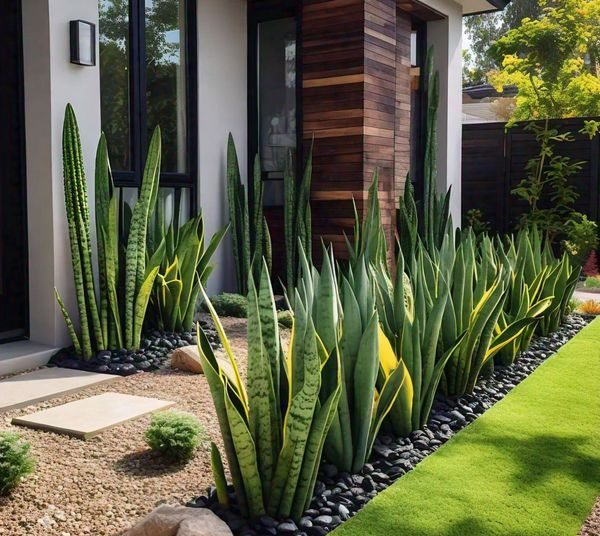Snake plants (Sansevieria), also known as mother-in-law’s tongue, are famously low-maintenance. They tolerate neglect, low light, and irregular watering. However, if you’ve noticed your snake plant staying the same size for months—or even years—you may wonder: Why is my snake plant not growing?
Here are the most common reasons and what you can do to help your plant thrive.
Why Is My Snake Plant Not Growing? 7 Causes & Fixes for Better Growth
1. Seasonal Dormancy
Snake plants naturally grow more slowly in the fall and winter. During these months, the plant conserves energy and focuses on root health rather than producing new leaves.
Solution: Don’t worry if growth pauses in winter. Growth usually picks up again in spring and summer when temperatures and light increase.
2. Insufficient Light
Snake plants can survive in low light, but they need bright, indirect sunlight to grow actively. In dim rooms, growth is extremely slow.
Solution: Place your snake plant near a window with filtered sunlight or use a grow light if natural light is limited. You can also check out our guide on how much light a snake plant needs.
3. Overwatering or Poor Drainage
Overwatering is one of the top reasons for stunted growth. Constantly soggy soil can lead to root rot, which prevents the plant from taking in nutrients.
Solution: Allow the soil to dry out between waterings. Use a well-draining potting mix and a container with drainage holes. Learn more in our full guide: how to water a snake plant.
4. Root-Bound Conditions
If your snake plant has been in the same pot for years, the roots may be cramped, limiting growth.
Solution: Check if roots are circling the pot or poking out of the drainage holes. Repot your snake plant every 2–3 years into a container that is 1–2 inches wider. For step-by-step instructions, see how to repot a snake plant.
5. Nutrient Deficiency
Snake plants don’t need much fertilizer, but they will grow faster with occasional feeding.
Solution: Use a balanced, diluted houseplant fertilizer once a month during spring and summer. Avoid fertilizing in winter when the plant is dormant.
6. Temperature Stress
Snake plants prefer 65–85°F (18–29°C). Exposure to cold drafts, sudden temperature changes, or being too close to heating vents can slow down growth.
Solution: Keep your plant in a stable indoor environment, away from cold windows or hot air vents.
7. Pests or Disease
Mealybugs, spider mites, or fungal infections can weaken a snake plant and stop its growth.
Solution: Inspect leaves and soil regularly. Wipe leaves with a damp cloth, use insecticidal soap for pests, and remove any mushy, diseased roots.
FAQ About Snake Plant Growth
1. How fast should a snake plant grow?
Snake plants are naturally slow-growing. On average, they produce 2–4 new leaves per year under normal indoor conditions. With bright light and proper care, they may grow a bit faster.
2. What is the best fertilizer for snake plants?
A balanced 10-10-10 or 20-20-20 houseplant fertilizer, diluted to half strength, works well. Apply only during spring and summer once a month.
3. Can I speed up snake plant growth?
Yes. Providing bright, indirect sunlight, the right pot size, well-draining soil, and occasional fertilizer can help boost growth.
4. Do snake plants need repotting often?
Snake plants like being slightly root-bound, but repotting every 2–3 years gives them more room to expand and encourages growth.
5. Why is my snake plant growing tall but not producing new leaves?
This usually happens when the plant is focusing energy on strengthening existing leaves or its root system. With enough light and nutrients, new leaf shoots will appear over time.
Final Thoughts
If your snake plant isn’t growing, don’t panic—this hardy plant is naturally slow-growing. By adjusting light, watering, pot size, and care routine, you can encourage healthier, more active growth. With patience and the right environment, your snake plant will reward you with strong, upright leaves that last for years.
















